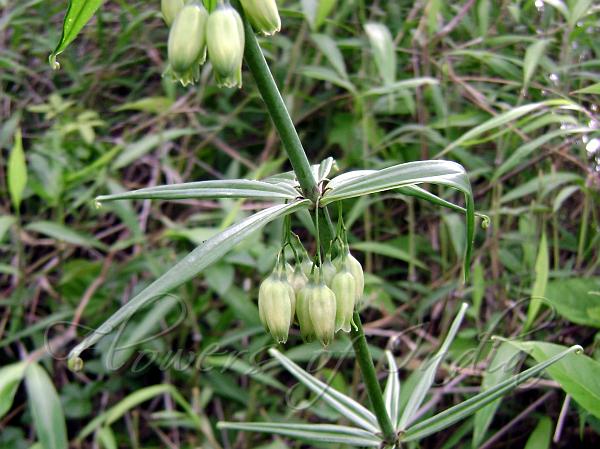|
| East-Asian Solomon Seal |
|

|

| File size | 434494 |
| Original date | 5/19/07 3:49 PM |
| Resolution | 2048 x 1536 |
| Flash | Flash did not fire, auto |
| Focal length | 5.8mm |
| Exposure time | 1/200s |
| Aperture | 2.8 |
| Focus Distance | |
| Metering Mode | Multi-segment |
| Camera make | SONY |
| Camera model | DSC-S650 |
| Sensor type |
|
|
|
|
Photo: |
Botanical name: Polygonatum kingianum Family: Asparagaceae (Asparagus family)
Polygonatums or Solomon seals are graceful shade pants.
These plants have
rhizomes (under ground stems) that give rise to long arching unbranched
stems. East-Asian Solomon Seal is a perennial herb with stem erect, 1-3 m
tall, hairless, apex subscandent. Leaves are arranged in whorls of 3-10.
They are stalkless, linear to lanceshaped, 6-20 cm long, 0.3-3 cm wide,
herbaceous or leathery, tip coiled. Flowers are borne in 1-2-4-flowered
clusters hanging on 1-2 cm stalks. Flowers are pendulous, hanging on
0.5-1.5 cm long stalks. They are pink or white, cylindric-bell-shaped,
1.8-2.5 cm long, with 3-5 mm petals. Filaments are threadlike or
compressed, 1.7-5 mm. Berries are red, 1-1.5 cm in diameter, 7-12-seeded.
It was named in the honor of Captain Phillip Parker King, 19th century
surveyor of the Australian coastline. East-Asian Solomon Seal is found in the
forests, thickets, shaded moist grassy slopes and rocks, at altitudes of
700-3600 m, in parts of China, Myanmar, Thailand and Vietnam. We also
found it growing in Manipur, probably the first record from India.
Flowering: March-May.
| Identification credit: Aaron Jennings Floden | Photographed on Shirui Hill, Ukhrul, Manipur. |
• Is this flower misidentified? If yes,